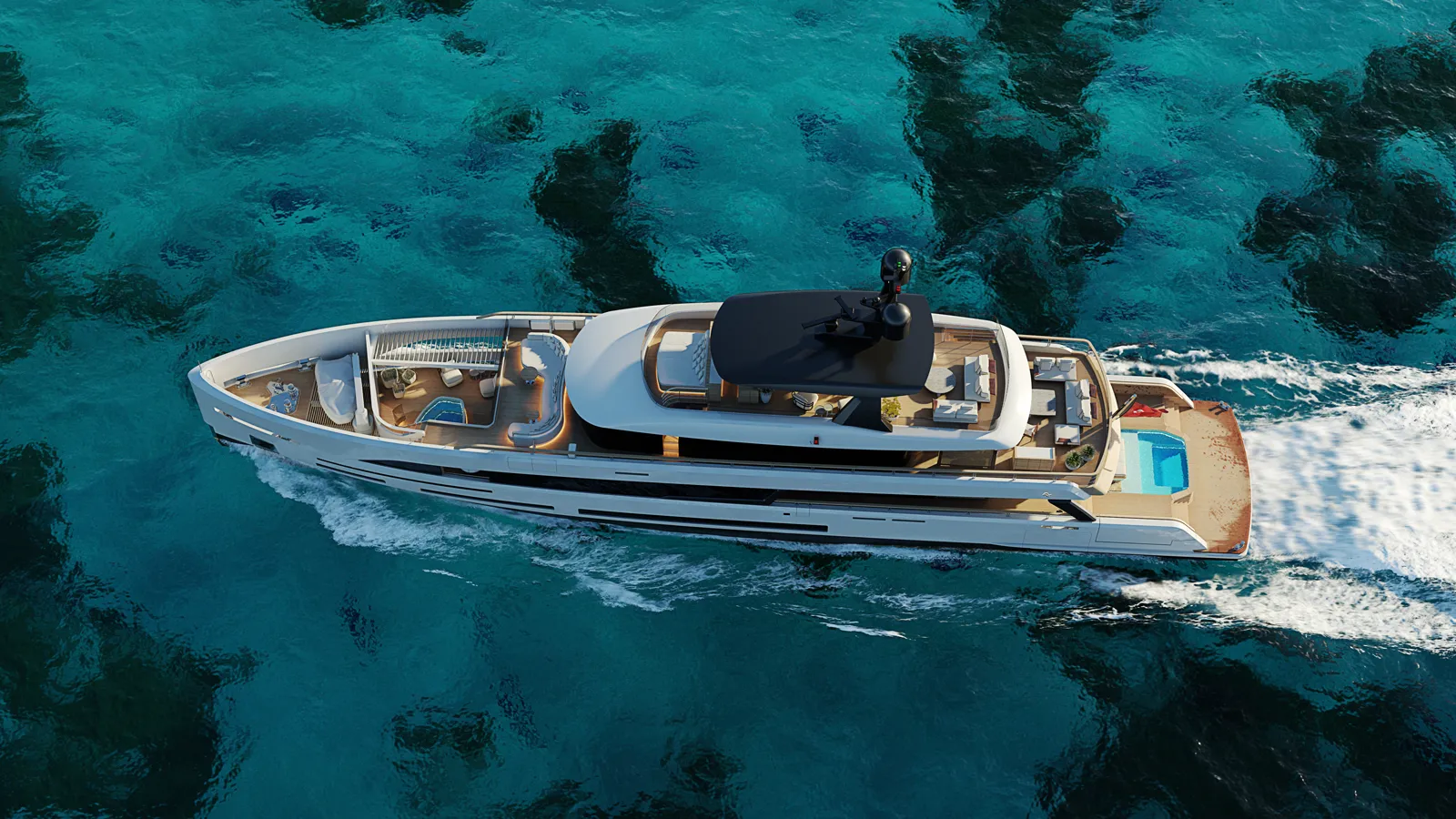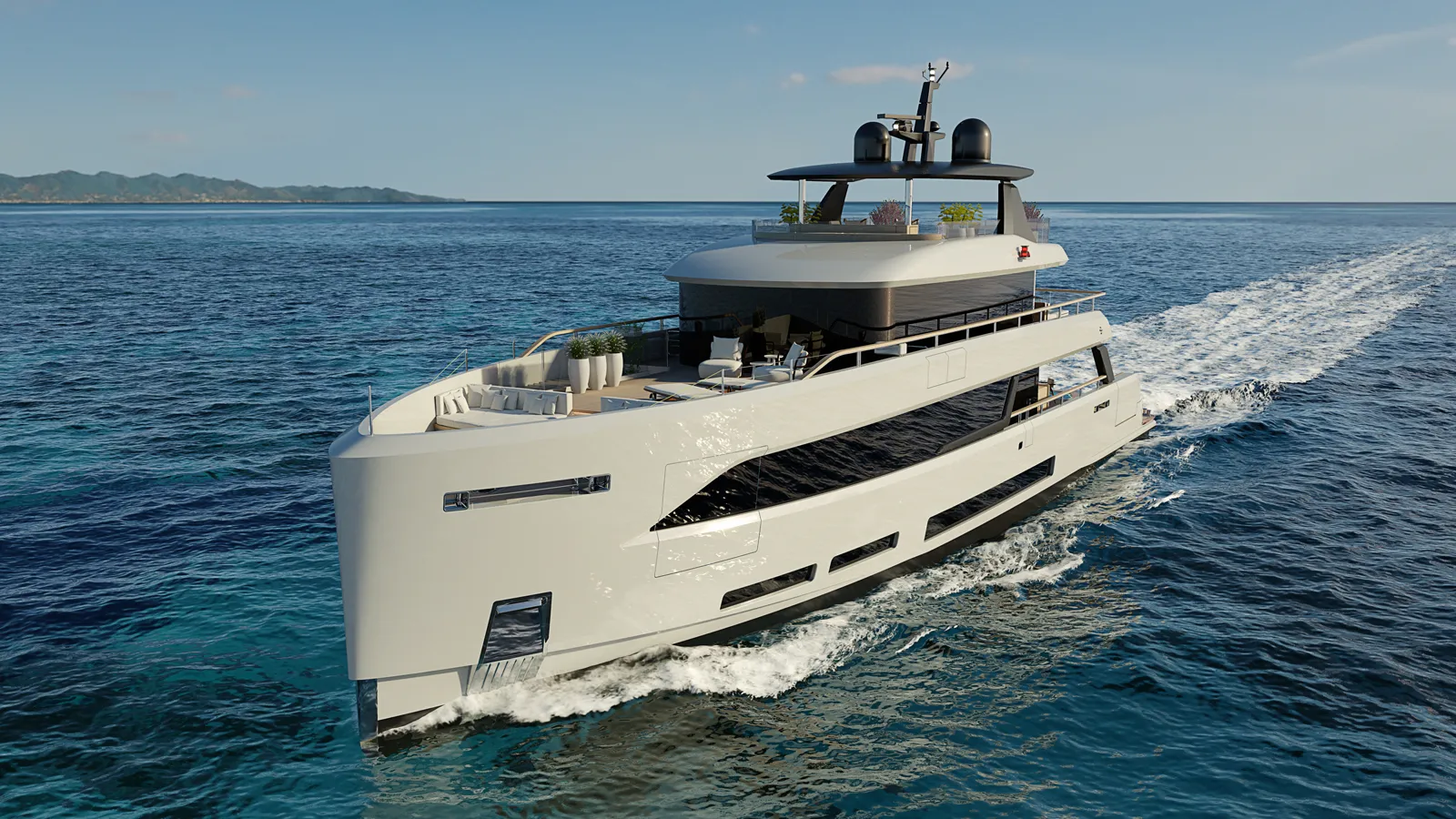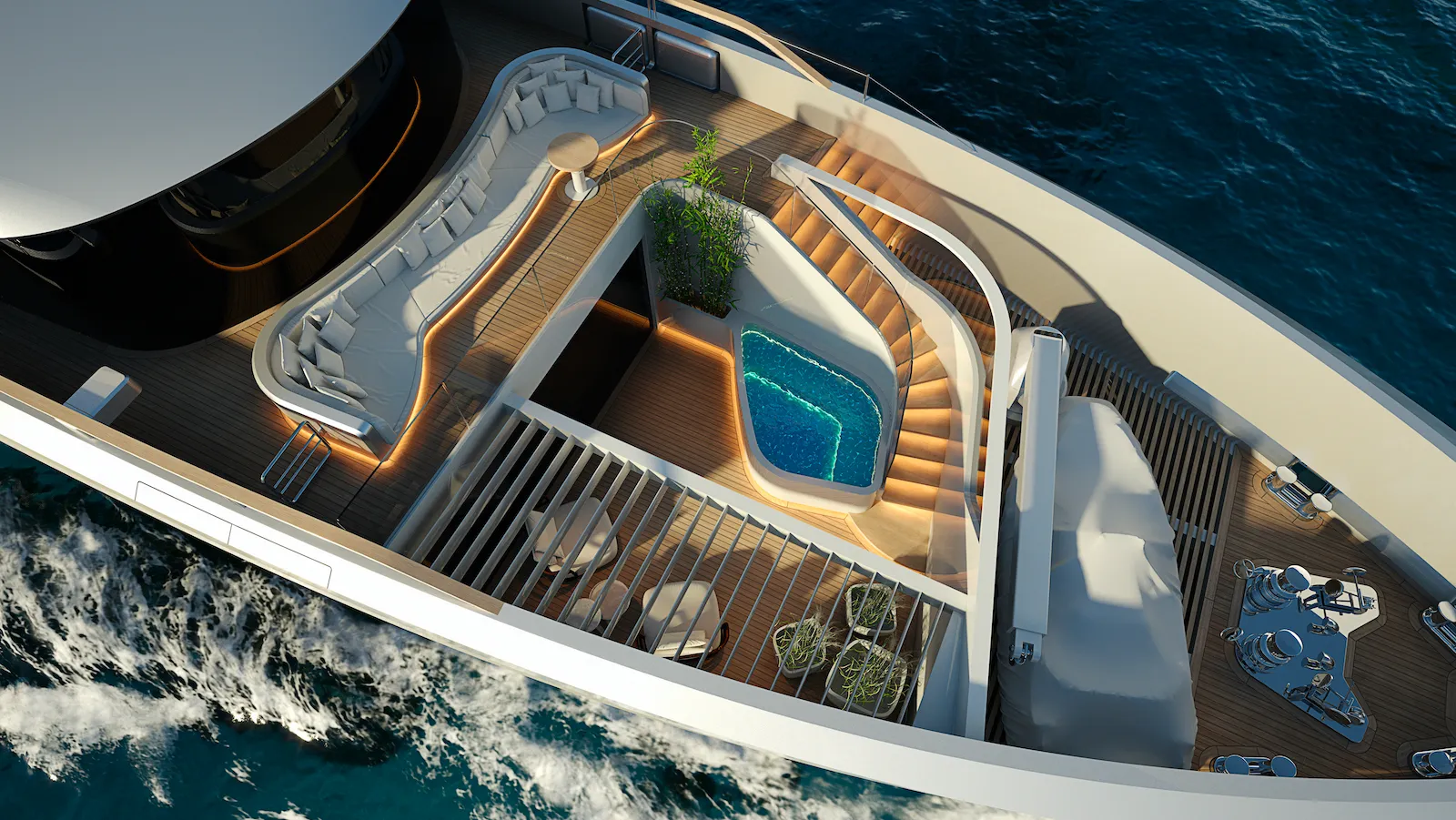The result of a new partnership with exterior designer Luca Vallebona and Van Oossanen Naval Architects, the new superyachts are available in three size increments – 35, 42 and 50 metres.
The yacht designs still carry the trademarks Sirena is known for: spacious interiors, attention to detail, efficiency and seaworthiness. However, the hulls used for the Sirena Superyachts range are a brand-new design that increases performance, largely thanks to the hull vane below the propellors. The work of the team at Van Oossanen Naval Architects, this hull design is yet another example of the studio’s broad experience and know-how on integral hull design, performance and efficiency.

To find out what else sets these superyachts apart from the others, we spoke to Perry van Oossanen, managing director of the naval architecture firm.
What are the key design details in the hulls for Sirena Superyachts?
To put it simply: these models are all designed for high displacement speeds. This is a speed range that puts specific demands on the hull design in marrying hull efficiency with key aspects such as seaworthiness, motion comfort and stability.
At Van Oossanen Naval Architects, we have a long track record of hull designs in this speed regime, which has led to the development of our patented Fast Displacement Hull Form (FDHF). The distinguishing features of this hull form – such as fine entry, shallow transom, and sprayrail in the bow – have been applied to the hull designs for Sirena. This leads to fuel-efficient cruising, outstanding top-end performance and relatively low engine power. Sirena’s choice to include the Hull Vane as a standard feature for the 42-metre and 50-metre models further enhances the vessel’s performance, comfort and fuel efficiency.

Are there any differences in this hull design compared to your other recent work?
The Sirena Superyachts are semi-custom designs, which makes the design work particularly interesting, as we need to have ready-made solutions for a variety of potential adjustments. On top of that, the exterior styling and general layout by Luca Vallebona has some distinguishing features. The patio decks forward and the pools with water mirrors in the aft are just some of the unique concepts that make our work interesting.
How would you describe the efficiency of the Sirena Superyacht hulls?
We know that our Fast Displacement Hull Form, especially in combination with the hull vane, delivers top-notch performance for vessels operating in the high displacement to semi-planing speed regime. The design brief for Sirena Superyachts was suited to benefit from the FDHF, and our CFD-validated performance calculations so far show that these yachts will indeed meet these expectations.

What are the predicted speeds of these hulls?
Depending on the client’s engine selection, the design speed for these yachts is between 15 and 19 knots – which is quite something for steel yachts in this size range. Speed in itself is not perhaps the key to a successful design, but efficiency definitely is – especially in this day and age, where the focus on the energy transition is bigger than ever. While a ready-to-go solution for the yachting industry is not yet within reach, reduction of energy demand of your yacht is low-hanging fruit. We feel privileged to be working with clients such as Sirena that share this mindset with us.

How do you feel the hull complements the rest of the yacht design?
As naval architects, we are more concerned with the underwater part of the yacht, which hopefully remains invisible most of the time. Even so, we find that the hull design should connect to the exterior styling so that everything is balanced. We are very happy to be collaborating with Luca Vallebona, who has taken our hull as the basis for his contemporary styling above the waterline. This has led to three balanced yachts that perform the way they look.
It is exciting for us to be part of Sirena’s expansion into the superyacht market, and to be developing these new models from the ground up in creative collaboration with Sirena and Luca Vallebona. We can’t wait to see these yachts grow in real life at the yard, and to see them afloat!
Source : Boat International










